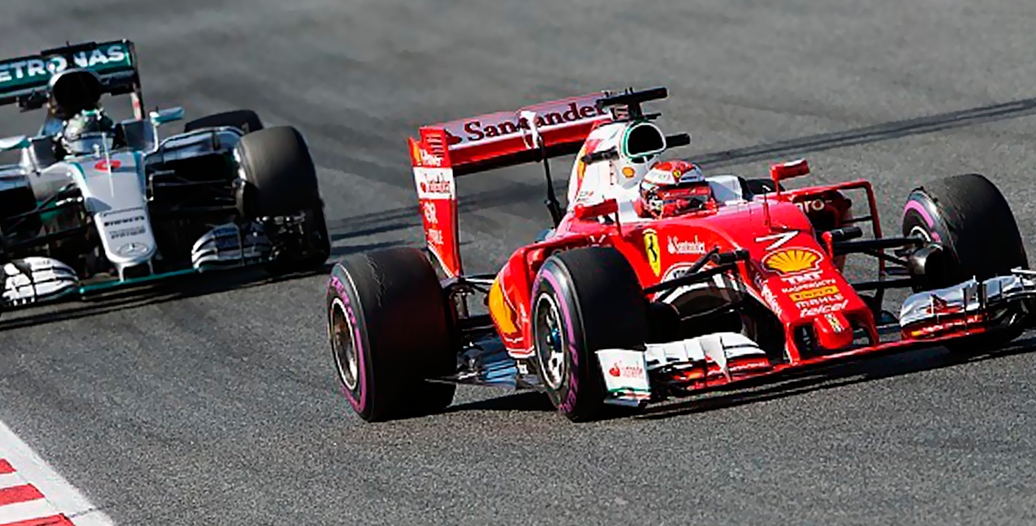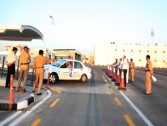
QMotor Mobile App
Find it on the App Store.


"I've seen some of the Formula 1 Races when I was flicking through the TV, but I was not interested to watch because I could not understand much about it” Is this you??
If the answer is yes, you're missing a lot of fun and excitement. The Formula 1 race has a lot of fun and excitement to watch, in addition, the amazing sounds that come from the most powerful car engines in the world is a music symphony.
Here we will take you to the world of Formula 1 and present to you a quick guide that explains the important parts of this amazing sports.
Cars must conform with strict laws to participate in the Grand Prix Formula 1 Championship. The vehicle height must not be less than 95 cm, and the width not more than 180 cm. The weight of the car with the driver should not be less than 600 kg. There are also regulations to control the dimensions of the car, such as the front and rear wings. In addition, there are several regulations that concern safety.
Formula 1 race starts with a warm-up lap. After which the cars gather at a standstill in a grid. A series of 5 lights turns on in a srquance, and when the fifth lights goes on, the race begins. A good start or a poor start could be indicative of the final result of the race.
At the beginning of the race - especially in the first turns - the excitement will be on its peak, as cars compete to hold the number one position from the beginning of the race.
A panel of race referees monitor all Formula 1 races as they are underway, and will give out penalties in case of any violation. Penalties could be speeding in pit lane or blocking another driver from taking over. The punishment against penalties varies between driving through pit lane for three laps, and could rach to compete disqualification from the race.
There is no need to refuel Fomula 1 cars during the race, however, managing the fuel is a major consideration for the race team.
Tire and brake pads are critical as well, and are all accounted before a race starts. Teams compete on who has the shortest pit stop.
The qualifying process for Formula 1 is one hour process, the hour is broken down to three-part event that eliminates the 6 slowest competitors after each of the first two sessions. Q1 is the name for the first qualifying session. It’s 20 minutes long, and at the conclusion of the session, the six slowest cars are not permitted to continue onto Q2.
After Q1, there is a 7 minutes break, after which Q2 starts with the 16 remaining cars. The second session is 15 minutes long. At the conclusion of Q2, the 6 slowest drivers are placed into the grid based on their lap times, filling the 11-16th spots. After Q2, there is another 8 minutes break before Q3 starts.
Q3, more commonly known as the “Shootout,” is a 10 minute session including the 10 fastest cars from Q2.
The engineering and technology involved in the Formula 1 race is mind blowing. Formula 1 cars are widely considered to be the most technologically-sophisticated race cars on the planet.

There are really two major things about the Formula 1 technology that you’ll need to know about when you watch. DRS and KERS.
DRS (pronounced “D-R-S”), an acronym for “drag reduction system,” is a mechanism that allows drivers to open a flap in their back wings with the push of a button. When the DRS system is enabled, wind resistance against the car is reduced, as is the car’s downforce.
KERS (pronounced “Kerrs”), or Kinetic Energy Recovery System, is a system that each driver is allowed to use for about 6.67 seconds per lap, and it provides increased acceleration while enabled.
There are two Championships during the Formula 1 season. The World Drivers’ Championship, and the World Constructors’ Championship. from the names, the Drivers’ Championship is awarded to the individual driver who win the highest point in the season. The same apply to Teams. More info on scoring can be found at Formula1.com
It is normal for drivers to change teams in the off-season. For example, in 2013 Michael Schumacher retired, and the hero driver Lewis Hamilton left McLaren team to take Schumacher’s place with the Mercedes AMG team.
As for the teams themselves, parity is minimal between the 11 of them. Powerhouses such as Red Bull, McLaren and Ferrari routinely find themselves at the top of the Constructors’ Championship standings, whereas “Junior Teams” like Caterham and Marussia who operate with smaller budgets, find themselves near the bottom of the standings.
The most important thing about watching a Formula 1 race is that you dont know the final result prior to watching, which means to watch the race live. You will double the excitement if you attend a race and enjoy the sounds of the engines. here is a list that includes the main Formula 1 circuits in the world.
Adelaide |
Australia |
Casablanca |
Morocco |
Liverpool |
UK |
Melbourne |
Australia |
Berlin |
Germany |
Sakhir |
Bahrain |
Porto |
Portugal |
Kent |
UK |
Bremgarten |
Switzerland |
Greater Noida |
India |
Le Mans |
France |
Las Vegas |
USA |
Montmeló |
Spain |
Clermont-Ferrand |
France |
Detroit |
USA |
Dijon |
France |
Leicestershire |
UK |
Imola |
Italy |
Estoril |
Portugal |
Dallas |
USA |
Shizuoka |
Japan |
Montréal |
Canada |
Mexico City |
Mexico |
Hockenheim |
Germany |
Mogyoród (near Budapest) |
Hungary |
Speedway |
USA |
Istanbul |
Turkey |
Rio de Janeiro |
Brazil |
Jarama |
Spain |
Jerez de la Frontera |
Spain |
São Paulo |
Brazil |
Yeongam |
South Korea |
Midrand, Gauteng |
South Africa |
Long Beach |
USA |
Nevers |
France |
Singapore |
Singapore |
Lisbon |
Portugal |
Monaco |
Monaco |
Barcelona |
Spain |
Mont-Tremblant, Quebec |
Canada |
Monza |
Italy |
Bowmanville |
Canada |
Nivelles |
Belgium |
Nürburg |
Germany |
Buenos Aires |
Argentina |
Zeltweg |
Austria |
Castellet |
France |
Barcelona |
Spain |
Pescara |
Italy |
Phoenix |
USA< |

The Q Motor team has included some valuable tips for you which will help you pass your driving...

The engine is the most important part of the car at all, and it includes
.jpg)
Names are a large and wide world with many meanings. Our awareness of the things around us...

This guide contains a definition of traffic violations, traffic points system, classification of...
Comments